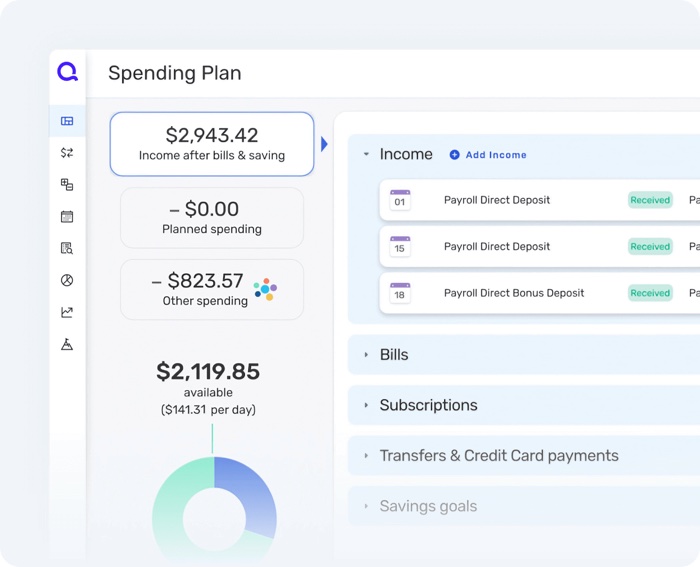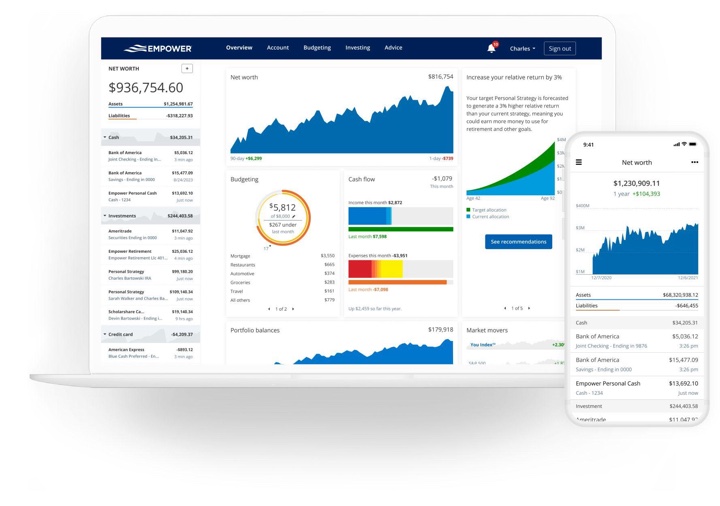Mint.com, the financial dashboard and budget tracking website bought by Intuit in 2009, is “shutting down” on January 1st, 2024. Shutting down doesn’t feel like quite the right word, as Intuit is mostly transitioning core Mint features into Credit Karma while offering all the extras in its Quicken Simplifi product. The Mint brand is going away, and you are left to pick between the two competing services that are still under their umbrella:
? Credit Karma. Basic balance tracking for free with ads. Direct import from Mint. Known best for their free credit scores and free credit monitoring services, Intuit bought Credit Karma in 2020 (sense a trend?). If you want to continue with tracking account balances, monitor overall spending broken down by category, and be shown ads for credit cards, then you can just migrate all your info to Credit Karma without having to type in all your logins again. Honestly, this seems like a reasonable merger as both used an ad-supported free service model, although the Credit Karma ads are definitely more prominent.
I am already a Credit Karma user for the free credit monitoring, but have not been invited to the formal migration yet. I plan on migrating and giving them a chance first, although I think the current CK website is quite… ugly. The app screenshots look a lot better, so we’ll see. Feature-wise, their FAQ makes it sound pretty similar to what Mint used to offer:
You will be able to bring the majority of your Mint financial account balances, your entire net worth history, plus all of your supported account connections and transactions.
? Quicken Simplifi. More automation and forecasting features, better customer service, and no ads for a monthly fee. Intuit has made a more “Mint-like” version of Quicken called Simplifi, and the regular price is $3.99/month (discounted to $24 for first year until 12/14). Deemed “Best Budgeting App” by Wirecutter.
If you’ve felt like Mint hasn’t gotten any new features in years and years, you’re not alone. I’m betting that’s because Intuit has been spending their research and development dollars on Simplifi. The look is much cleaner than you used to see with Quicken, and nicer than Mint/Credit Karma because there are no ads anywhere.
Essentially, Intuit has its premium paid Quicken Classic/Simplifi brand, and its free ad-supported Credit Karma brand (which was also more profitable than Mint). Mint just didn’t fit in neatly anymore, so it’s gone. Here are a few more non-Intuit alternatives to Mint to consider:
? Empower Dashboard. Free financial account tracking more focused on investments and asset allocation. Well, free with one sales phone call. I personally use Empower (formerly Personal Capital) to track all of my investments across different brokerage accounts and 401k providers. Empower also tracks bank accounts, but due to habit I initially preferred to use Mint to track all of my cash across different banks and credit unions. Empower is probably my fallback if Credit Karma gets too annoying, as I’m already familiar with it (and it’s also free with no ads).
I like to tell people upfront that even though it is “free”, after you sign up for Personal Capital, they will call you on the phone to see if you might like their financial planning service. This is how Empower makes money, and I’m fine with that. If you ignore their calls, they will keep calling. If you answer it once and politely decline, they will never call you again (it’s been years and years now) and let you use the dashboard completely free and in peace (and without huge banner ads). I highly suggest the latter option.
? Money by Envestnet Yodlee. Free, basic account tracking. No ads. Yodlee was one of the earliest aggregators that allowed you to view all of your balances in one place. Envestnet is a provider of technology for wealth management and financial advisors, and bought Yodlee in 2015. They appear to make most of their money selling this aggregation service to large financial institutions and now financial advisors for wealthy clients, and I can only guess that they offer this “Money” dashboard without ads (or support) as a sort of free beta testing preview for individuals. If you just want to see your various balances in a nice barebones list and don’t need any additional cool features, this may fill all your needs. Note that in my limited experience, Yodlee has more connection issues with certain banks and credit unions than Mint or Plaid, so test it out first.
? Monarch Money. Fully-featured budget tracking. No ads. $99 per year regular price. If you wished Mint would have stayed an independent company and continued adding new features and stayed alive by charging money for those features, Monarch Money has the closest feel to that. I haven’t used it myself, but that is certainly my impression after reading through its website, looking at the UI screenshots, and skimming reviews. It uses rollover budgeting like YNAB (You Need A Budget), which is has a very similar feature set and pricing to Monarch Money. It does come in at the highest price here at $15.99/month or $99 a year (discounted to $50 for first year with code MINT50).
Where will you be going when the Mint.com site shuts down in 2024?






